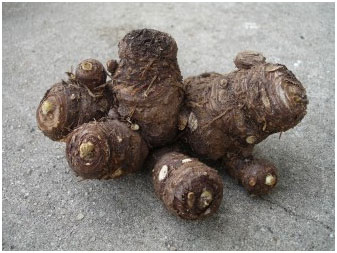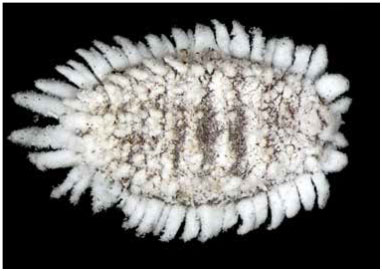An overview
The Australian Department of Agriculture (the department) is conducting a review of its existing policy for the importation of the dormant tubers of Calla lilies (Zantedeschia species only). This policy has not been reviewed for several years.
Reason for review
This review was undertaken in response to a request by the Australian horticultural industry as well as international trading partners, who are seeking improved import conditions forCalla lily tubers. The policy has been a longstanding issue. Reviewing the import policy provides the opportunity to consider current scientific information and best-practice science, as well as emerging pests and diseases or changed environmental conditions.
Propagating Calla lilies
Calla lily plants are native to southern Africa but are grown in many countries around the world. In warm climates they are grown in fields with raised beds, and in cooler climates, in greenhouses or in other temperature-controlled facilities. They produce long-stemmed, elegant flowers, popular with florists and horticulturalists.
Calla lilies can reproduce from tubers, which are swollen, underground plant parts that store food. Calla lily tubers are harvested when the plants become dormant (have temporarily stopped growing). When the leaves yellow and die down, the tuber hardens and the roots retract.
This review focuses on improving the import conditions for Calla lily tubers for planting. As tubers are able to grow into a plant, it is particularly important to make sure that the tubers are free of harmful exotic pests and diseases before they are released into Australia. Therefore, it is important that import conditions adequately protect Australia from these pests and diseases.

Australia’s biosecurity arrangements
Australia has a robust biosecurity system that identifies and responds to pests and diseases that could potentially enter, establish and spread in Australia. This system has kept us free from many of the pests and diseases that are present in other parts of the world, and keeps our agricultural industries and environment productive and thriving. Our biosecurity system and policies are based on science and are fundamental to our productivity and resources. Effective biosecurity enhances our position as a producer and exporter of high quality and safe animal and plant produce and opens up new international markets.
An increase in global trade and the associated movement of plant material across borders has increased the range and distribution of pests and diseases associated with plants. It is not possible or practical to eliminate all biosecurity risks to Australia, as this would mean no movement in or out of the country for people, animals or plants. That is, no travel and no international trade of any products. Instead, Australia manages biosecurity risk to an acceptable level. Australia aims to achieve a high level of protection by reducing biosecurity risks to a very low level, but not to zero.
The goal of risk management is to reduce the risk of entry, establishment, spread and associated consequences of quarantine pests and diseases to an acceptable level. Australia’s proposed import policy for Calla lilytubers is based on layered safeguards using phytosanitary (plant health) measures that are consistent with Australia’s international obligations. If pests or diseases are not managed appropriately by one measure, there are other safeguards to progressively reduce and manage risk.
The biosecurity risk analysis process
The risk analysis process is an important part of Australia’s biosecurity framework, and is conducted by technical and scientific experts. It enables the department to formally consider and manage risks associated with importation of products into Australia.
Australia’s biosecurity processes are consistent with the approaches allowed under international agreements on trade and biosecurity. This includes the World Trade Organization Agreement on the Application of Sanitary and Phytosanitary Measures.
The review of current import conditions for Calla lily tubers considers whether the existing policy is adequate to manage the pest risk of importing Calla lily tubers and whether other alternative risk management measures are available. To do this, the department has:
- undertaken a comprehensive analysis of scientific literature
- identified possible biosecurity risks associated with Calla lily dormant tubers from all countries
- evaluated risk management measures to control these risks.
The review is a comprehensive process, based on analysis of the latest available scientific information. The review includes a Pest Risk Analysis (known as a PRA) on a number of identified pests and diseases. The pest risk analysis is conducted by Australia in accordance with national and international obligations and guidelines.
The review process also includes consulting with relevant government bodies and stakeholders.More detailed information about the pest risk analysis conducted for the review of the import policy for Calla lilytubers can be found in the full draft review report, available on the department’s website.
Current import conditions for Calla lilies
Calla lily tubers are currently allowed into Australia for growing purposes, subject to specific import conditions. These conditions include mandatory inspection on arrival, fumigation and growth in a closed quarantine facility for disease screening for a minimum of 12 weeks. The full conditions are available on the department’s import conditions database (ICON).
Review process
This review considers whether the existing policy for the importation of Calla lilytubers into Australia is adequate to address biosecurity risks and whether alternative risk management arrangements are available. The review is limited to:
- the identification of biosecurity risks associated with Calla lilytubers for growing purposes from all countries
- the identification of phytosanitary measures for the identified biosecurity risks.
Review findings
The review identified a fly, a mealybug (Fig 1), a bacterium, two fungi and six viruses as quarantine pests of Calla lily tubers. However, it found that Calla lilytubers may continue to be imported into Australia because the risk of these quarantine pests can be managed to a very low level.
Figure 1: Grape mealybug is one of the identified quarantine pests of Calla lily tubers

Proposed changes to import conditions
The review proposes several changes to the current import conditions for Calla lily tubers to improve the efficiency of quarantine measures while allowing industry to have greater and quicker access to new plant varieties from overseas.
The review proposes two different sets of import conditions for Calla lily tubers to manage the biosecurity risks. The import conditions are based on where the tubers have originated and what is known about that source in terms of biosecurity risk.
- Tubers produced under a systems approach or certification scheme: Tubers undergo risk management measures in the exporting country. The health of the tubers is then checked through inspection processes when they arrive in Australia.
- Tubers of unknown health (that is, from non-approved sources): Tubers undergo risk management measures during containment in quarantine facilities in Australia.
1. Tubers produced under a systems approach or a certification scheme
The review proposes that dormant tubers which meet all the components of a ‘systems approach’ (agreed risk management measures which achieve the appropriate level of protection) or a certification scheme will be released on entry into Australia and will not require growth in a quarantine facility.
The proposed systems approach requires the following:
- dormant tubers that are sourced from high health mother stock
- in-field monitoring and management for quarantine pests and pathogens, as well as vectors that may transmit quarantine diseases
- mandatory treatment (methyl bromide fumigation, hot water treatment, or insecticidal dip)
- pre-export inspection
- on-arrival inspection.
2. Tubers produced from non-approved sources
The review proposes that:
- Dormant tubers produced from non-approved sources (that is, of unknown health status) must undergo mandatory inspection on arrival in Australia.
- Dormant tubers undergo mandatory treatment. Hot water or insecticidal dip treatment may be used as an alternative to methyl bromide fumigation. These treatments may be conducted on arrival in Australia or offshore prior to importation.
- The minimum period in quarantine will be reduced from 12 to six weeks, or until the plant has developed multiple, open and green leaves, in order to screen for diseases.
The department considers the measures proposed in this review will reduce the risks posed by the identified quarantine pests and diseases to an acceptable level.
Figure 2: Summary of proposed import conditions for the two categories of Calla lily tubers: tubers of unknown health and tubers produced under a systems approach

Next steps
The department invites technical comments on the review before the import policy is finalised. In particular, comments are sought on whether the proposed risk measures are appropriate and if there are alternative measures which would provide equivalent risk management.
Please refer directly to the full technical review paper before making comments, available at Biosecurity Advices 2015.
Comments should be sent to Plant Biosecurity, within the Department of Agriculture by 28 August 2015.
